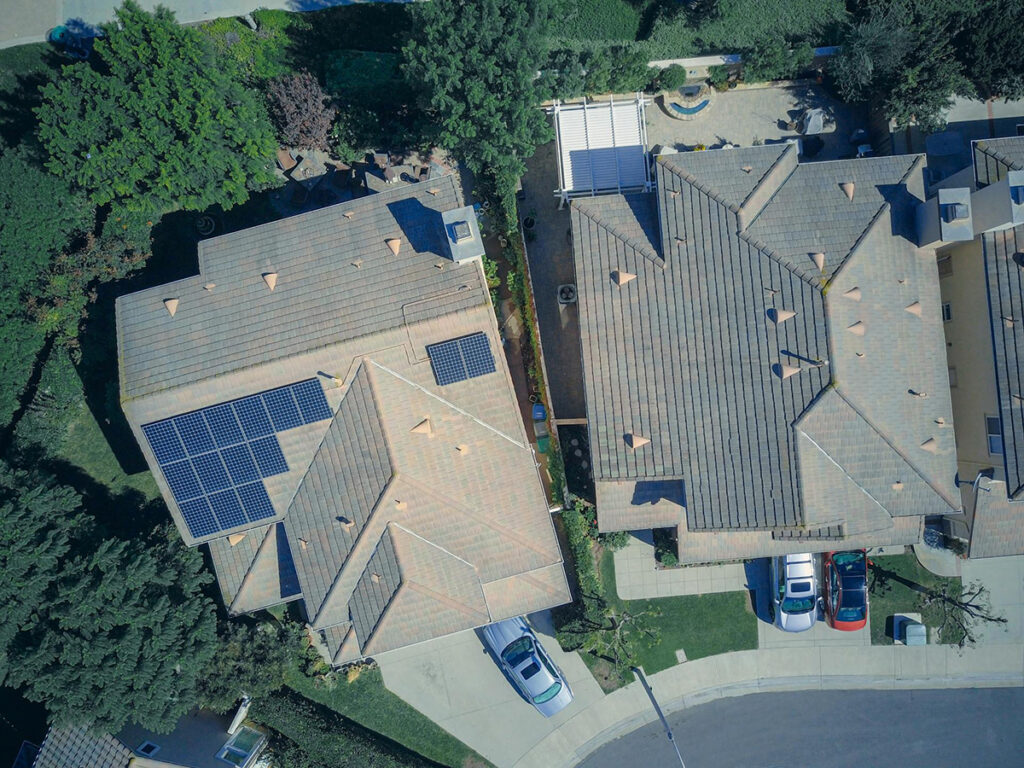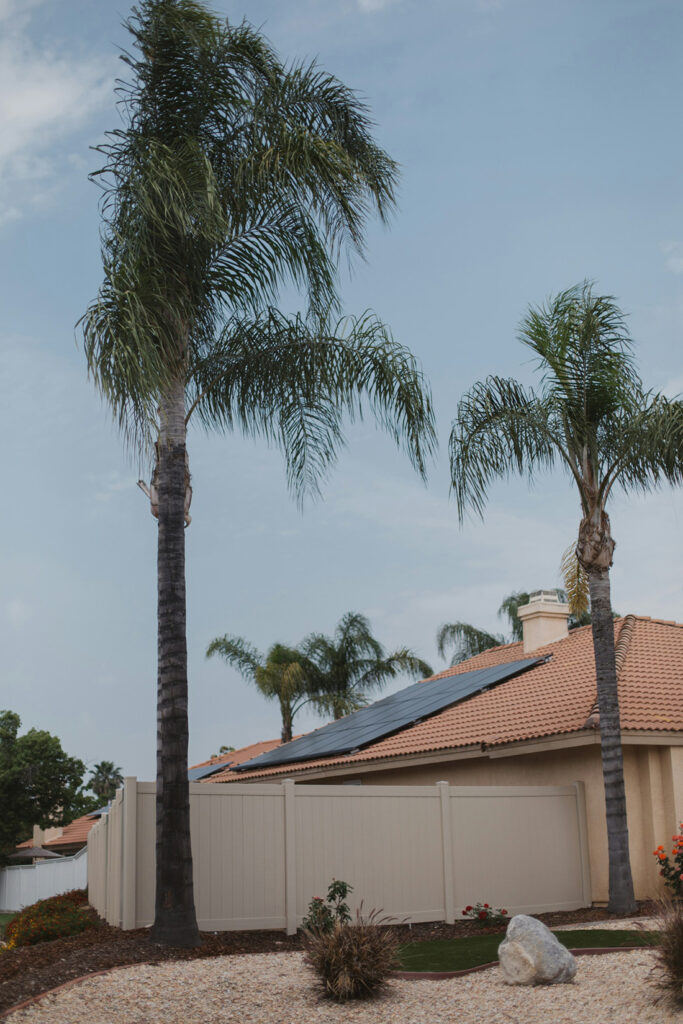What is the Lifespan of Residential Solar Panels?
As homeowners increasingly turn to renewable energy sources, one question frequently arises: “What is the lifespan of residential solar panels?” Understanding the longevity of solar panels is crucial for making informed decisions about investing in solar energy. Here we will examine the data behind how long panels last that are being used for residential installs.
The Average Lifespan of Solar Panels
Residential solar panels are typically rated to last between 25 to 30 years. However, this does not mean that they will stop producing electricity after this period. Rather, their efficiency in converting sunlight into electricity gradually decreases over time.
Degradation Rate
The degradation rate of solar panels is a critical factor in determining their lifespan. This rate measures the annual decline in the panels’ ability to convert sunlight into electricity. According to the National Renewable Energy Laboratory (NREL), the average degradation rate for solar panels is about 0.5% per year. This means that after 25 years, a panel will still produce approximately 87.5% of its original capacity.
Manufacturer Warranties
Most manufacturers offer a performance warranty for their solar panels, guaranteeing a certain level of efficiency over 25 years. Typically, these warranties ensure that the panels will operate at 80-90% of their original capacity by the end of the warranty period. This is a strong indicator of the expected lifespan and durability of the panels.
Factors Affecting Solar Panel Longevity
Several factors can influence the lifespan and performance of residential solar panels:
Quality of Materials
High-quality materials and advanced manufacturing processes contribute to longer-lasting solar panels. Panels from reputable manufacturers are more likely to have lower degradation rates and better long-term performance.

Installation Quality
Proper installation is crucial for maximizing the lifespan of solar panels. Poor installation can lead to issues such as water infiltration, electrical faults, and physical damage. It is essential to hire certified and experienced installers to ensure the panels are securely mounted and correctly wired.
Environmental Conditions
The environment in which the solar panels are installed plays a significant role in their longevity. Factors such as temperature fluctuations, humidity, and exposure to harsh weather conditions can affect the panels’ performance and degradation rate. Panels in extreme climates may degrade faster than those in more temperate environments.
Maintenance
Regular maintenance helps extend the lifespan of solar panels. Cleaning the panels to remove dirt, debris, and snow ensures they receive maximum sunlight. Additionally, periodic inspections to check for damage or wear can help identify and address issues before they affect performance.
The Max Life of Newer Solar Panels
Technological advancements have led to the development of more durable and efficient solar panels. Innovations such as bifacial panels, which capture sunlight on both sides, and improvements in photovoltaic (PV) cell technology contribute to longer-lasting and more efficient panels. As a result, newer solar panels tend to have lower degradation rates and longer lifespans than older models.
Emerging data suggests that the best panels on the market today could last up to 40 years or more, maintaining high efficiency and performance over time.
Extended Lifespans of Newer Panels
Modern solar panels benefit from improvements in materials, manufacturing processes, and design innovations. For example, the latest photovoltaic (PV) cell technologies, such as Passivated Emitter and Rear Cell (PERC) technology, have significantly lower degradation rates compared to older panels.

Data on Longevity
NREL Research and Findings
The National Renewable Energy Laboratory (NREL) has conducted extensive research on the longevity of solar panels. Their findings indicate that newer panels, especially those using advanced technologies, have degradation rates as low as 0.3% per year. This means that after 30 years, these panels can still operate at around 91% of their original capacity.
Real-World Examples
Several long-term installations around the world provide compelling evidence for the extended lifespan of modern solar panels. For instance, solar farms that have been operational for over 25 years, such as those in Germany and Japan, continue to produce electricity at high efficiency rates. Data from these installations show that with proper maintenance and favorable environmental conditions, the panels can remain effective for 35 to 40 years.
Case Study: PV Durability Initiative
The Photovoltaic Durability Initiative (PVDI), an industry-wide project, tests and certifies solar panels for long-term durability. Panels that pass the PVDI’s rigorous tests often show potential lifespans well beyond 30 years. These tests simulate extreme weather conditions, prolonged exposure to UV radiation, and mechanical stress to ensure the panels can withstand decades of use.
Factors Contributing to Extended Lifespans
Improved Materials
Advancements in materials science have led to the development of more resilient solar panels. For example, the use of high-quality silicon and robust encapsulation techniques protects the cells from environmental degradation. Anti-reflective coatings and tempered glass further enhance the panels’ durability and performance.
Technological Innovations
Technological innovations, such as bifacial panels, have also contributed to longer-lasting solar solutions. Bifacial panels, which can capture sunlight from both sides, reduce the overall wear and tear on individual cells, leading to lower degradation rates and extended operational lifespans.
Enhanced Manufacturing Processes
Enhanced manufacturing processes ensure higher quality control and consistency in solar panel production. Automated manufacturing and stringent quality checks minimize defects and improve the overall longevity of the panels.
The Economic Impact of Solar Panel Lifespan
Understanding the lifespan of residential solar panels is not just a technical concern; it has significant economic implications. The longer the panels last, the greater the return on investment (ROI) for homeowners.
Cost of Ownership
The initial cost of installing a solar system can be substantial. However, the long-term savings on electricity bills and potential incentives such as tax credits and rebates can offset these costs. A longer lifespan means homeowners can enjoy these savings for a more extended period, improving the overall cost-effectiveness of the solar system.
Resale Value
Homes with solar installations can have higher resale values. Prospective buyers often view solar panels as a valuable asset that reduces energy costs. Panels with a longer remaining lifespan are particularly attractive, as they promise continued savings with minimal additional investment.
Environmental Benefits
The environmental benefits of solar energy are maximized when panels are used for their full lifespan. Longer-lasting panels mean less frequent replacement, reducing the overall environmental impact of manufacturing and disposing of solar equipment. This contributes to a more sustainable energy solution.
Solar Panel Lifespan Summed Up
The lifespan of residential solar panels is a key consideration for homeowners looking to invest in renewable energy. With an average lifespan of 25 to 30 years and advancements in technology leading to lower degradation rates, solar panels represent a reliable and long-term solution for reducing energy costs and carbon footprints.
Proper installation, regular maintenance, and choosing high-quality panels from reputable manufacturers are essential for maximizing the lifespan and performance of solar systems. As real-world data and case studies demonstrate, modern solar panels can continue to generate significant electricity well beyond their initial warranty periods, making them a sound investment for the future.
For those contemplating the shift to solar energy, understanding these factors and the potential longevity of solar panels can provide the confidence needed to make an informed and beneficial decision.


